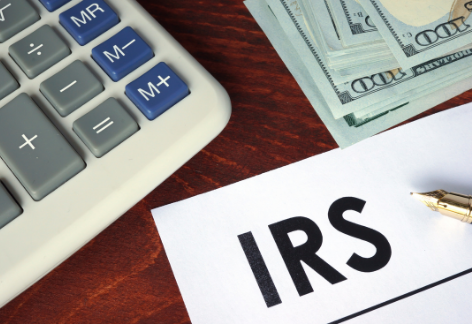Receiving an IRS notice is very stressful, so what should you do if you receive an IRS notice of deficiency CP3219A? Here’s what to know.
Receiving letters or notices from the IRS is often a mixed bag. Sometimes it’s good news (like a tax refund), and sometimes it’s nothing (like informing you of a minor change in your return). But sometimes, just sometimes, it’s something that makes the little hairs on the back of your neck stand up for a bit – like being informed that you owe the government money and are short. This means that any refunds you had don’t cover the bill the IRS has written for you and that you have a due balance for the taxman. When the IRS wants to communicate this, it will do so through a notice of deficiency, or CP3219A letter.
What Is an IRS Notice of Deficiency?
The IRS notice of deficiency is a letter informing the reader that there has been a proposed change in their due taxes and that this change has led to increased due tax. The letter, also known as a CP3219A letter, will usually come after the IRS informs you of inconsistency in your tax information or tax return, such as a CP2000, which explains that the IRS’s information doesn’t match up with what you provided. It’s important to note the language here. The notice of deficiency sounds severe, but one of the first things the IRS will note is that it’s a proposed change. You do have some recourse here. Knowing this – and acting as soon as possible – is essential. Let’s go over the letter in some more detail.
Examining Your CP3219A Letter
First and foremost, the IRS sends a CP3219A when it wants to inform you of a proposed change to your taxes that would result in a bigger tax bill. The notice also informs you of your option to either supply additional information to refute the IRS’s findings or appeal the US tax court decision. Take note of the information the IRS provides, as per the section of the notice titled “Changes to your tax return.”
If you disagree with these changes and have the information needed to correct them, you can get together with a tax professional to create a formal response defending your position and providing the appropriate information. On the other hand, if you wish to amend your return and add income, credit, or expenses, you can do so through Form 1040-X, which is used to amend your return. Attached to the notice is Form 5564. Fill out and sign this form to agree to the proposed changes.
What to Do After Receiving an IRS Notice of Deficiency
What you do next depends on how accurate the IRS is with its assessment. If you do owe taxes, you will want to consider how you can best repay them. If the due balance is small, it might be enough to head over to the IRS’s official payment plans and look at your options for a direct transfer to the IRS, in a lump sum or overtime. But if the debt is more substantial, you may want to consider paying in installments or looking into other options.
If you have proof that you do not owe taxes, it’s still in your best interest to contact a tax attorney. You will want personal representation when discussing the potential for an appeal with the US Tax Court, not the Independent Office of Appeals. You have 90 days to petition a challenge with the US Tax Court if the IRS still hasn’t made a decision you agree with after receiving the information you have for them. Either way, you will also have to prepare any information you can to corroborate your claim that the IRS is wrong about its assessment, including receipts, transcripts, bank statements, etc.
Understanding the IRS Collection Process
While it’s not something you should worry about if you get your ducks in order quickly enough, the IRS has access to an arsenal of tools to pursue a debt. This collection process works through claiming priority over other creditors through a tax lien, to claiming your wages or assets in a tax levy. Acting on notices and as they come in – or getting in touch with a tax professional as soon as possible – will help you prevent further collection actions by the IRS and help you negotiate a reasonable payment plan with them.
Complying With the Notice
If you agree to the contents of the notice, then filing a Form 5564 means waiving your right to petition the IRS’s decision within the next 90 days. Regardless of whether you contact them, the IRS will follow up notice CP3219A with a bill for the additional tax you have incurred and any applicable penalties and interest.
Note that there are additional penalties for failing to pay promptly (5 percent per month, up to 25 percent over 5 months). There is no limit on interest. When you decide to create a payment plan for your tax debt, there may be a chance for you to get any penalties applied to your tax debt waived under certain circumstances. Consider talking to an attorney about whether or not you apply for penalty relief. Note that your options for payment include:
-
- Full payment.
- Payment in short-term lump sums (less than 120 days).
- Payment in monthly installments (more than 120 days).
- Reduced payment (via an offer in compromise) only under certain circumstances.
Considering an Appeal to IRS Notice of Deficiency
If you are considering an appeal and have exhausted any potential to work with the IRS, prepare all your relevant information beforehand and get a consultation with a tax attorney and tax litigation professional. You will be asked to file a petition with the US Tax Court, which means it will ultimately be up to a judge to review the evidence and make a decision. Here at Rush Tax Resolution, we get the clear answers you need to your tax debt and litigation questions. Give us a call today for a free consultation.

